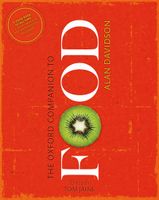Advertisement
Smoking Foods
Published 2014
Wood smoke contains tarry substances which are deposited on the food, and whose flavour penetrates it to some extent. These substances contribute to preservation by killing bacteria. They form an impervious layer on the surface of the food, sealing it from the air. This averts rancidity of fat caused by exposure to the air; so smoking is especially useful for fatty foods such as herring or bacon. Smoking also helps preservation through the heat of the process, which dries the food. However, smoking is not generally used on its own as the only preservation method for a food, since it has a limited effect.


